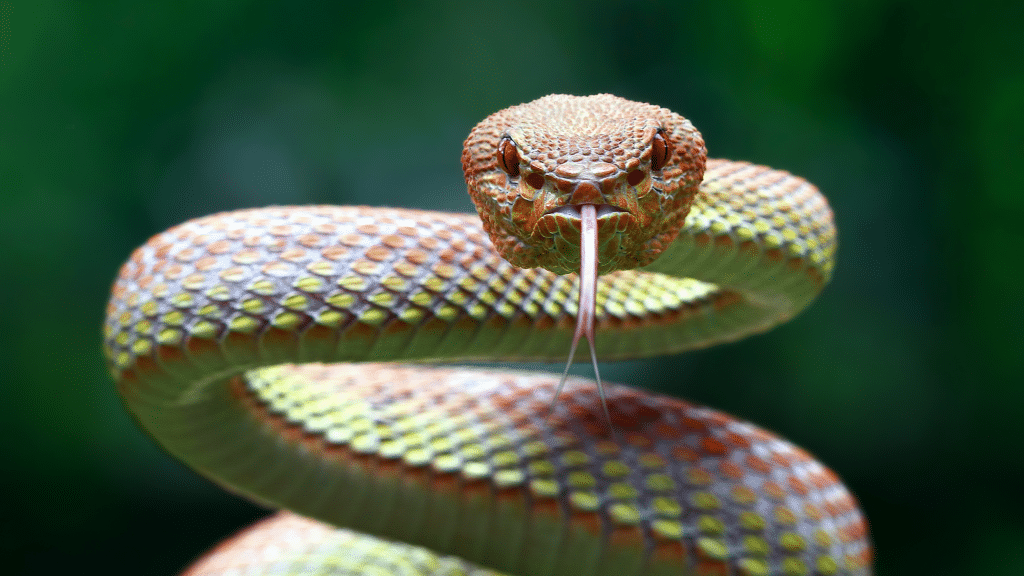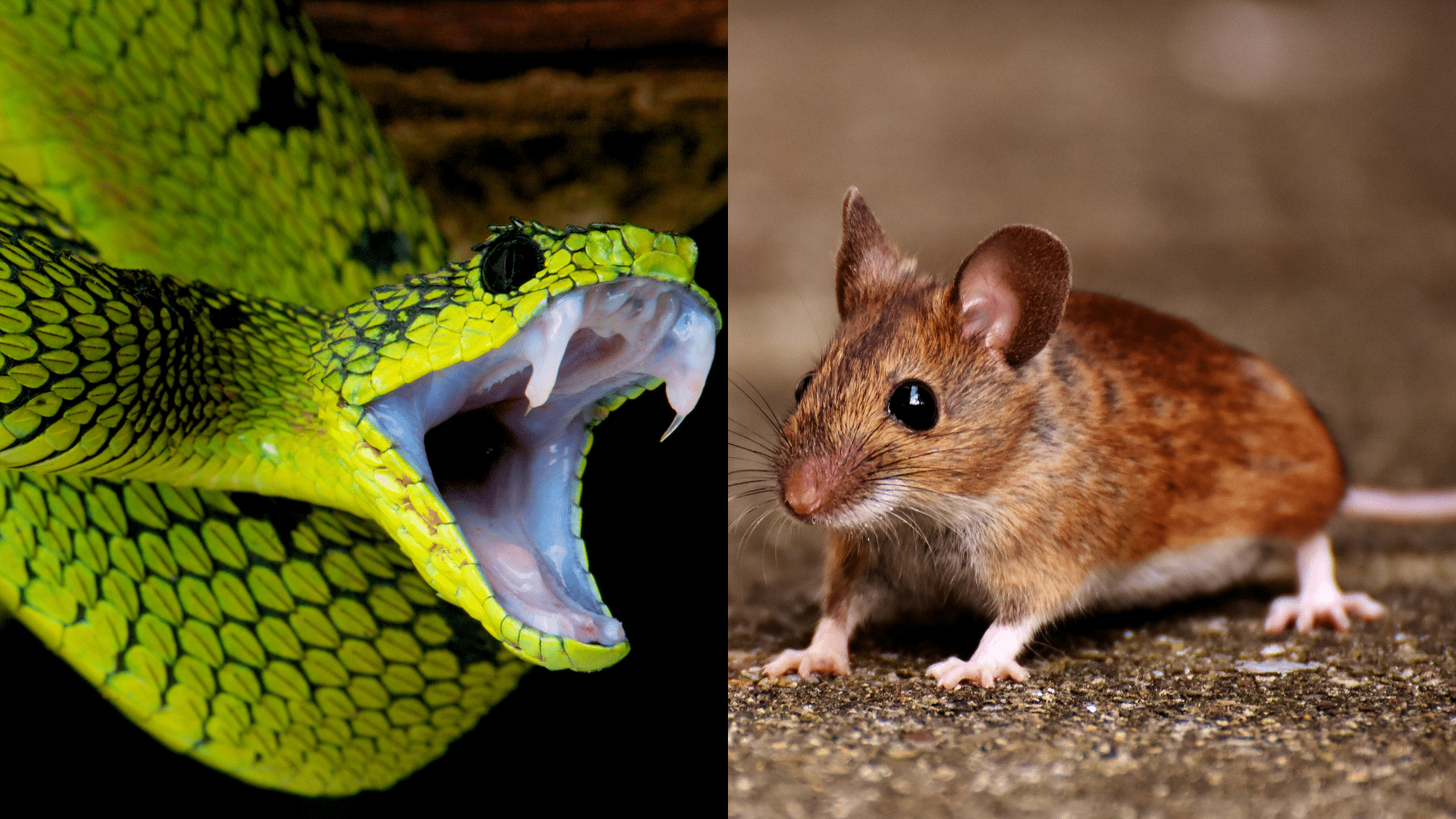Snakes slither into our lives through stories, zoos, and sometimes our own backyards.
These cold-blooded reptiles spark strong reactions, fear, wonder, or curiosity.
But how much do you really know about them? Behind their flicking tongues and watchful eyes lies a world of amazing skills and surprises.
Some snakes swim while others climb, and they come in countless colors and sizes.
Ready to change how you think about these scaly creatures?
This list of fun and interesting facts about snakes will make you see these mysterious animals differently.
Physical Features and Abilities
- There are over 3,000 species of snakes worldwide, making them one of the largest groups of reptiles.
- The smallest snake, the Barbados thread snake, can fit on a coin.
- The largest snake ever recorded was a reticulated python over 25 feet long.
- Snakes have no eyelids; instead, their eyes are protected by a clear scale called a brille.
- They sleep with their eyes open due to the lack of eyelids.
- Snakes use their forked tongues to smell and can even detect which direction a scent is coming from.
- They have a special organ called the Jacobson’s organ in the roof of their mouth for detecting scents.
- Some snakes, like vipers and pythons, have heat-sensing pits to detect warm-blooded prey.
- Snakes can “hear” vibrations through their jaws and bellies, even though they have no external ears.
- Snake scales are dry and smooth, not slimy.
- They can have up to 1,200 bones in their bodies, compared to 206 in humans.
- The forked tongue allows snakes to “smell in stereo” and track scent trails.
- The brille (eye scale) is shed along with the skin during ecdysis.
- Snakes don’t have a diaphragm; they use muscles between their ribs to breathe.
- Some snakes can hold their breath for up to an hour underwater.
- The scales on a snake’s belly help it grip surfaces as it moves.
- Snakes are ectothermic, relying on external heat to regulate body temperature.
- They bask on rocks or roads to warm up in the sun.
- Snakes can move silently, making them stealthy hunters.
- Some snakes, like the sand boa, burrow underground to hunt or escape the heat.
Movement and Behavior
- Snakes have five forms of movement: lateral undulation, rectilinear, sidewinding, concertina, and arboreal.
- Many snakes are excellent swimmers; sea snakes spend most of their lives in water.
- The fastest snake, the black mamba, can slither up to 12 mph.
- The rosy boa is one of the slowest snakes, moving at about 1 mph.
- Snakes can climb trees, cliffs, and even walls using specialized scales.
- Some snakes can glide through the air by flattening their bodies and launching from trees.
- The paradise tree snake is famous for its gliding ability.
- The Philippine flying snake can jump and glide between trees.
- The flying snake can glide up to 100 feet between trees.
- Some snakes, like garter snakes, can give off a musky smell when threatened.
- The hognose snake plays dead and emits a foul odor when threatened.
- Some non-venomous snakes mimic the color and patterns of venomous species to avoid predators.
- The false water cobra flattens its neck to look more dangerous, though it’s not as venomous as true cobras.
- Snakes can sense changes in air pressure and may become more active before storms.
- Some snakes, like the water moccasin, can bite underwater.
- Many snakes are solitary and only come together to mate.
- Anacondas mate in “breeding balls,” with one female and multiple males.
- Many snakes hibernate or become less active during cold weather.
- A group of snakes is called a den, pit, or nest.
- The rough green snake is an excellent climber and spends much time in shrubs.
Diet and Hunting
- Snakes swallow their prey whole, thanks to highly flexible jaws.
- Their jaws are connected by stretchy ligaments, allowing them to eat animals much larger than their heads.
- Snakes don’t chew; their digestive system breaks down food completely.
- Some snakes can go months without eating after a big meal.
- Venomous snakes use fangs to inject venom into prey.
- There are four main types of snake venom: neurotoxic, hemotoxic, cytotoxic, and myotoxic.
- Constrictors like boas and pythons kill by squeezing, causing cardiac arrest rather than suffocation.
- Pound for pound, kingsnakes are the strongest constrictors.
- Some snakes, like the spider-tailed viper, have tails that mimic prey to lure birds.
- Snakes are mostly carnivorous, eating rodents, birds, frogs, insects, and even other snakes.
- Some large pythons can eat animals as big as deer or pigs.
- The python’s jaw can stretch wide enough to swallow prey larger than its head.
- The tiger keelback can store toxins from its prey and use them for defense.
- The Indian python can go a year without eating after a large meal.
- Snakes help control rodent populations, making them important for ecosystems and agriculture.
- Some snakes, like colubrids, mimic rattlesnakes by shaking their tails to scare predators.
- The rattlesnake’s rattle is made of interlocking keratin segments that create a buzzing sound.
- Some sea snakes can breathe partially through their skin, allowing longer dives.
- Sea snakes don’t drink seawater; they drink rainwater that collects on the ocean’s surface.
- The stiletto snake can envenomate without opening its mouth.
Notable Species and Records
- Snakes are found on every continent except Antarctica.
- The green anaconda is the heaviest snake, weighing up to 550 pounds.
- The reticulated python is the longest snake, with some individuals over 30 feet long.
- The garter snake is one of the most widespread snakes in North America.
- The inland taipan is considered the world’s most venomous snake.
- The king cobra is the world’s longest venomous snake, reaching up to 18 feet.
- The boomslang’s venom can cause internal bleeding and is highly potent.
- The coral snake’s colorful bands warn predators of its venomous bite.
- The eyelash viper has beautiful “eyelash” scales above its eyes.
- The bushmaster is the largest pit viper in the world.
- The Gaboon viper has the longest fangs of any snake, up to 2 inches.
- The black mamba is feared for its speed and potent venom, but it avoids humans when possible.
- The eyelash viper is known for its striking appearance and ambush hunting style.
- The rainbow boa has iridescent scales that shimmer in the light.
- The iridescent shieldtail is one of the rarest snakes, found only in India’s Himalayas.
- Some snakes, like the blind snake, look like earthworms and live underground.
- Not all snakes are venomous; most are harmless to humans.
- The vine snake is thin and camouflaged to look like a twig or vine.
- Some snakes, like the milk snake, mimic the coral snake’s colors to avoid predators.
- Snakes are vital to ecosystems, controlling pests and serving as food for other animals.
Reproduction and Life Cycle
- Not all snakes lay eggs; some give birth to live young, especially in colder climates.
- The king cobra is the only snake that builds a nest for its eggs.
- Snakes shed their skin several times a year to grow, heal, and remove parasites.
- Shedding is called ecdysis and can occur up to 12 times a year in young snakes.
- Snakes can regenerate damaged skin and scales after shedding.
- Snakes have two penises (hemipenes), and females have two clitorises.
- Some snakes, like the boa constrictor, give birth to live young instead of laying eggs.
- Snake eggs are leathery, not hard like bird eggs.
- Snakes can live over 20 years, with some pythons reaching 40 years in captivity.
- The oldest recorded snake lived to be over 47 years old.
- Snakes have a slow metabolism and can survive long periods without food.
- The venom of some snakes is being studied for use in medicine, including painkillers and blood pressure drugs.
- Snakes have been kept as pets for thousands of years.
- Snakes have been featured in mythology, religion, and folklore around the world.
- In some cultures, snakes are considered protectors and bringers of good luck.
- The ouroboros, a snake eating its own tail, is an ancient symbol of eternity.
- The snake’s forked tongue inspired the medical symbol, the caduceus.
- Snakes are often misunderstood, but most species are harmless to humans.
- Snakes have been revered in many cultures as symbols of rebirth, healing, and wisdom.
- Snakes use their sense of smell to find food, mates, and avoid danger.
That’s a Wrap
From venomous fangs that work like precision syringes to heat-sensing superpowers that put thermal cameras to shame, snakes are nature’s ultimate specialists.
The next time you encounter a snake, whether in your backyard or on a nature documentary, you will see more than just a scary reptile.
These legless animals deserve to be where they are.
After all, a world without snakes would be overrun with rodents and missing some seriously cool biology.





















